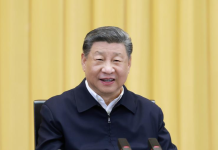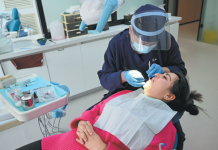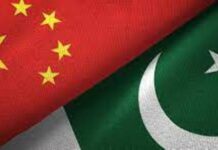From Our
Correspondent
BEIJING: Peng Zhiyong, director of the department of critical care medicine of Zhongnan Hospital affiliated to Wuhan University, was busy as always despite the waning of the COVID-19 epidemic in China.
At the beginning of the year, 53-year-old Peng led nearly 200 medical workers to fight against the virus on the front line in hard-hit Wuhan, capital of central China’s Hubei Province.
Since the COVID-19 outbreak, a great number of medical workers have raced against time and fought tenaciously against the virus, risking their own lives to save the lives of others with total devotion.
HEROES IN HEROIC CITY
It was his third time working on the front lines battling a major epidemic following the fight against SARS in 2003 and avian influenza in 2016.
“As a doctor, I must always maintain respect and concern for life and never give up on any patient,” Peng said. “Wherever there are patients, we too are there. Especially in the face of major disasters, we should rush to the front,” said Peng. “It is our responsibility.”
“Facing COVID-19, none of my colleagues retreated. Many young doctors who were about to get married or who had little kids at home nevertheless continued their work on the front lines,” he added. With an incurable disease, Zhang Dingyu, head of Wuhan’s designated coronavirus-treating Jinyintan Hospital, has been a hero to many over the past months.
Diagnosed with amyotrophic lateral sclerosis (ALS), he will progressively lose muscle strength, eventually becoming paralyzed and unable to speak, move, swallow or even breathe. But the 56-year-old doctor, along with his colleagues, have treated and saved more than 2,800 COVID-19 patients, many of whom were severely or critically ill.
Last week, Zhang was awarded the national honorary title “the People’s Hero” for his outstanding contributions in the fight against COVID-19.
“I never thought about being a hero. Everyone has made sacrifices and contributions (in this battle). I’m just one of them,” said Zhang, also deputy director of the Hubei Provincial Health Commission. Thanks to the devotion and contribution of millions of medical workers like Peng and Zhang, by the end of May, of the cumulative total of 83,017 confirmed cases reported on the Chinese mainland, 78,307 had been cured and discharged from hospital. This equates to a cure rate of 94.3 percent, according to the white paper “Fighting COVID-19: China in Action” released by the State Council Information Office.
FRONT LINES ACROSS BORDERS
Xu Yonghao, an intensivist with the First Affiliated Hospital of Guangzhou Medical University in south China, has spent the past year accumulating unforgettable memories.
In June last year, Xu was sent to Nyingchi in southwest China’s Tibet Autonomous Region for medical assistance. However, the COVID-19 epidemic disrupted his plan on the plateau and Xu returned to Guangzhou to join the fight on Jan. 25, the first day of the Chinese New Year.
“As medical personnel, we must be on the front lines,” he said.
Xu had been working hard to treat critically ill patients, then he was sent to the cities of Shenzhen and Zhuhai in Guangdong Province to participate in consultations, while at the same time he was helping medics in Hubei Province via telemedicine.
On March 7, Xu joined the medical expert team organized by the Red Cross Society of China and flew to Iraq to assist the country with its fight against COVID-19.
“It’s our mission to heal the wounded and rescue the dying,” said Xu. “No matter at home or abroad, I will go wherever I am needed.”






